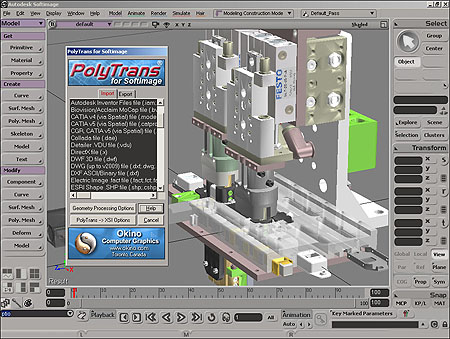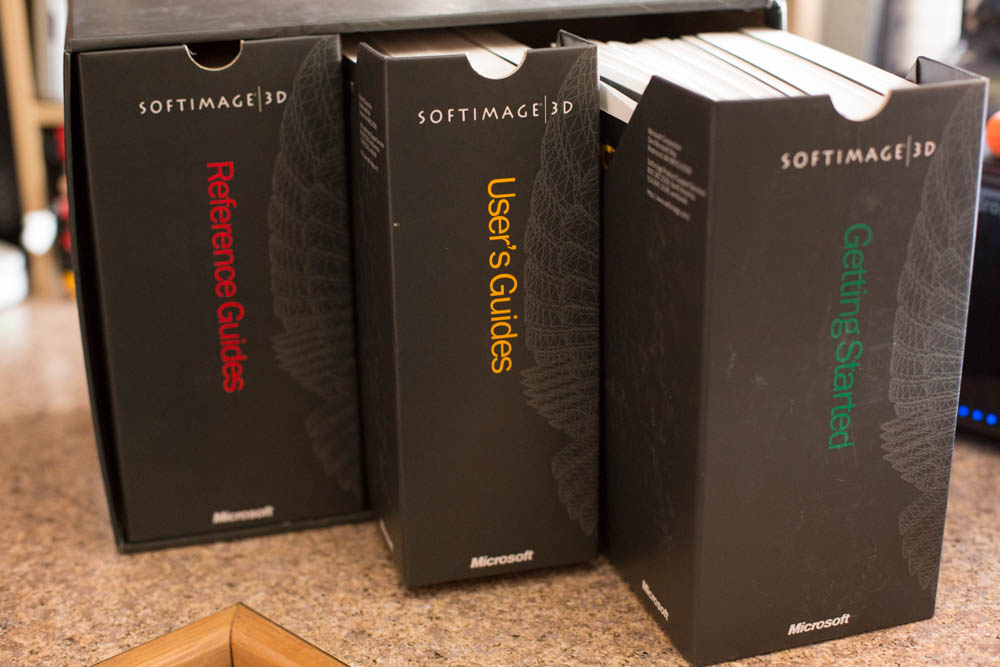
This had some immediate advantages over Softimage. Then in 1998 Avid bought Softimage from Microsoft for $285 million – though there were hints it was more after Softimage|DS to complement Avid’s own Symphony finishing system.Īround the same time, in February 1998, SGI subsidiary Alias|Wavefront was releasing its character animation and visual effects software, Maya 1.0. Softimage|DS was launched in 1997, an editing and effects system that was tied to high-performance hardware (for the time) to allow finishing of commercials and music videos (this was back in the day when hardware restrictions meant that most editing was done using relatively low-quality previews).
#SOFTIMAGE 3D XSI WINDOWS#
The first Windows port of Softimage|3D, version 3.0, was released in early 1996. Softimage|3D Extreme 3.5, released later that year, included particle effects and the mental ray renderer, which offered area lights, ray tracing, and other advanced features. 3D paint functionality was added a year later in version 3.7. For the first time Modeling, animation, and rendering were integrated into a single package.
#SOFTIMAGE 3D XSI SOFTWARE#
The software was initially demonstrated at SIGGRAPH in 1988 and was released for Silicon Graphics workstations the following year as the Softimage Creative Environment™. In 1986, National Film Board of Canada filmmaker Daniel Langlois, in partnership with software engineers Richard Mercille and Laurent Lauzon, began developing an integrated 3D modeling, animation, and rendering package with a graphical interface targeted at visual artists. History of Softimage: A RISE and FALL Story Like any 3D program no longer developed Softimage’s absence from the industry is sad, but when we evaluate what Softimage managed to accomplish while it was alive, it’s hard not to be appreciative of how it went out. ” Softimage has been passed around from company to company over the years like a CGI hot potato, It’s as if they never knew what to do with this eccentric genius child.”īut from what we know about 3D programs that came and went over the years, Softimage, probably, was the most impressive. Image Source : ĭespite its success in the industry of Video games and VFX for film, Softimage did not really find a home as Nick Webber, senior FX TD at Milk VFX said: Also, it was used to create amazing video games at that time from the Japanese “Resident Evil” series, “Silent Hill” trilogy, “Half-life”, “The Legend of Zelda”, the “Star Wars” video games, and much more.


Softimage was used by the biggest VFX studios like ILM to create Blockbusters such as “Jurassic Park”, “Terminator 2”, “Titanic”, “Men in Black,” “Spawn”, and “The Fifth Element”.

Leaving the industry at large trying to integrate its features into their own products. Softimage was able to get things done quickly and clients loved it. Softimage was a genius 3D program that was ahead of its time, at one point of its life cycle, it reached new heights in the computer-generated images field and became the number one 3D package in the 90s, and despite its limited toolset, it was super-fast to use, with a highly intuitive UI. The History of Softimage is the story of a 3D software that did not really find a home except in the hearts of the Artists who used it over the decades to create amazing pieces of artwork.


 0 kommentar(er)
0 kommentar(er)
